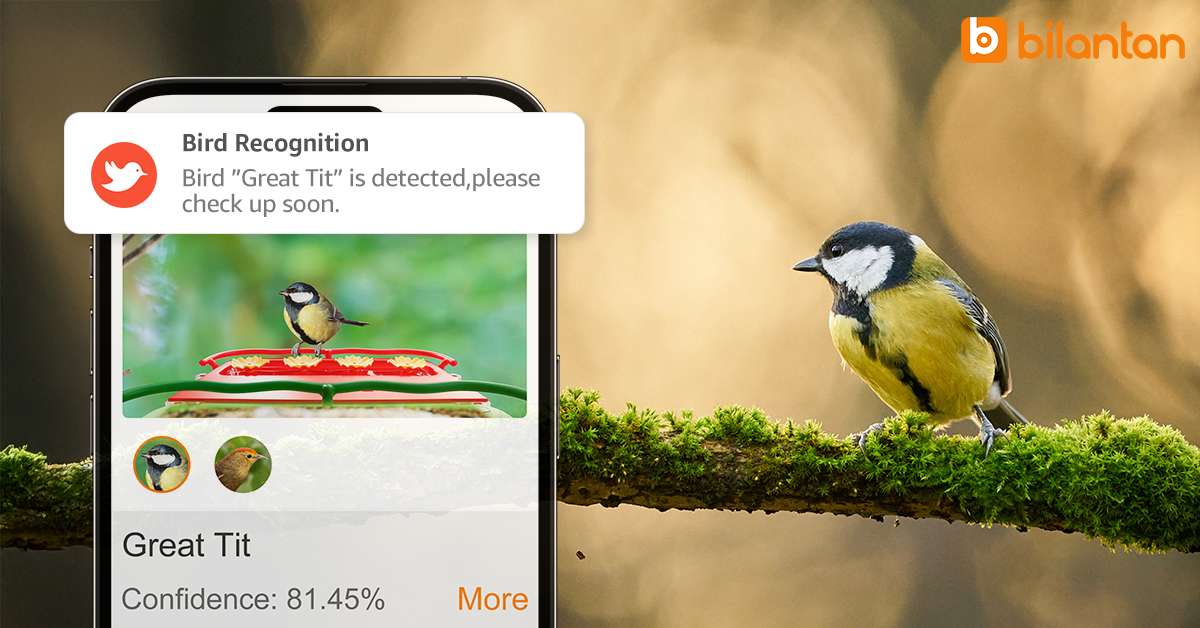Introduction
In the natural world, birds captivate observers with their diverse forms, calls, and behaviors. However, among the more than 10,000 bird species globally, many share similar appearances and habitats, making identification challenging through traditional observation alone. With advancements in artificial intelligence, big data, and portable devices, bird identification has transitioned from relying on printed field guides in the "experience era" to leveraging technology in the "intelligent era." This article systematically reviews the evolution of bird identification tools, underlying technological principles, and practical methods, providing a useful guide for birdwatchers and nature researchers.
I. Traditional Bird Identification: The Observer’s Fundamentals
Before technological tools became widespread, bird identification depended heavily on an observer's sensory skills and knowledge base. The following core features, categorized by body parts, are essential for identifying bird species:
Quick Reference Table for Key Physical Features

Traditional Field Guides
Printed field guides have been fundamental tools for bird identification. Some commonly used guides include:
1.The Sibley Guide to Birds (David Allen Sibley) - One of the most authoritative guides in North America, featuring over 900 detailed illustrations.
2.National Geographic Field Guide to the Birds of North America (Jon L. Dunn & Jonathan Alderfer) - Covers more than 1,000 species with distribution maps.
3.Peterson Field Guide to Birds of North America (Roger Tory Peterson) - A classic guide using illustrations with clear identification markers.
4.Birds of North America: A Guide to Field Identification (Kenn Kaufman) - Ideal for beginners, using photographs instead of illustrations.
While useful, printed guides have limitations: they are cumbersome, have slow retrieval speeds, and do not effectively convey vocalizations or dynamic behaviors. These shortcomings have driven the rise of technological tools in modern birdwatching.
II. AI-Powered Identification Tools: How Mobile Apps are Transforming Birdwatching
1. Image Recognition Apps

Apps like Merlin Bird ID (developed by Cornell University) allow users to quickly identify birds by capturing or uploading photos. Their technology relies on:
Convolutional Neural Networks (CNNs): Extracts key physical features (e.g., beak shape, wing patterns).
Geofencing Technology: Uses GPS to filter bird species likely to be in the area.
Database Matching: Compares uploaded images with extensive datasets from platforms like eBird.
For example, if a user photographs a long-legged waterbird in a wetland, Merlin Bird ID will prioritize suggestions like herons and egrets rather than forest-dwelling species. Studies indicate that these tools achieve over 90% accuracy for common species but still require manual verification for juvenile birds, molting individuals, or rare species.
2. Birdsong Recognition Systems

Bird vocalizations contain rich information about mating, territorial claims, and alarms. Apps like BirdNET (developed by Cornell University and the Max Planck Institute) analyze recordings in real time. Key breakthroughs include:
Spectrogram Conversion: Translates audio into visual frequency-time graphs.
Deep Learning Models: Identifies unique pitch frequencies and syllabic patterns.
Environmental Noise Filtering: Removes background noise from wind, insects, and human activity.
As of 2023, BirdNET can recognize over 3,000 bird species by sound. It excels in distinguishing songbirds like warblers and thrushes in dense forests, outperforming the human ear.
III. The Power of Community: Crowdsourced Bird Identification
When AI tools struggle to determine species, global birdwatching communities provide crucial support. Here’s how to get the most out of these platforms:
1. Major Birdwatching Forums
r/whatsthisbird (Reddit): Handles over 300 identification requests daily, with an average response time of 15 minutes.
BirdForum: A community of 170,000 users, including experts who solve complex cases.
2. Effective Posting Techniques
Title Format: Clearly state the location and date of the sighting.
Essential Content:
Clear photos (side, back, and flight views preferred)
Audio recordings (uploaded via tools like Vocaroo)
Observation details, including weather and behavior
Forum Rules: Avoid posting captive birds or eggs for identification.
3. Community Identification Advantages
Experts analyze subtle plumage differences (e.g., olive-green vs. yellow-green hues on the nape).
More accurate assessments of hybrid species and vagrants.
Extended ecological knowledge (e.g., why White Wagtails frequent parking lots).
IV. Advanced Identification Equipment: Tools for Scientific Research
1. Portable DNA Barcode Analyzers
Field DNA testing is emerging as a breakthrough technology. Devices like Oxford Nanopore sequencers allow for rapid genetic analysis using feathers or droppings, completing barcode sequencing within two hours. This is invaluable for identifying young birds or cryptic subspecies.
2. Thermal Imaging and Radar Tracking
FLIR Thermal Cameras: Enable nighttime observations of owls and nocturnal birds.
Meteorological Radar: Networks like NEXRAD in the U.S. track continent-wide bird migrations, providing critical data on climate change effects.
V. Strategic Tool Combinations: From Beginners to Experts
For Beginner Birdwatchers:
Recommended Setup:
- Mobile Apps: Merlin Bird ID + BirdNET
- 8x Magnification Binoculars
Key Features to Prioritize:
- Body size (relative to common reference objects)
- Beak shape and color
- Wing and tail markings
- Leg features (length, color, webbing)
For Scientific Researchers:
Recommended Equipment:
- Camera with 600mm+ telephoto lens
- Parabolic microphone-equipped recorder
Data Analysis Techniques:
- Tailor software for measuring tail fork angles
- Microscopic analysis of feather structure to determine age
VI. Ethics and Privacy: The Boundaries of Tech-Enhanced Birdwatching

While technology has greatly improved identification accuracy, it also raises ethical concerns:
Community Posting Restrictions: The exact locations of rare birds should not be publicly shared to prevent poaching.
Photo Editing Guidelines: Image manipulations that alter plumage colors must be avoided to prevent misidentification.
Acoustic Interference: Sharing distress calls or playback recordings that may stress birds is generally discouraged in online forums.
By respecting these principles, birdwatchers can ensure that technological advancements contribute positively to conservation and research without disrupting avian ecosystems.
Conclusion
Bird identification has evolved dramatically from traditional observation-based methods to AI-powered solutions and community-driven approaches. Whether you're a casual birdwatcher or a field researcher, integrating technology with fundamental observational skills will enhance accuracy and efficiency in identifying avian species. As AI continues to advance, the future of bird identification promises even greater precision and accessibility for nature enthusiasts worldwide.
This article was compiled by bilantan from various online sources.





Leave a comment
All comments are moderated before being published.
This site is protected by hCaptcha and the hCaptcha Privacy Policy and Terms of Service apply.